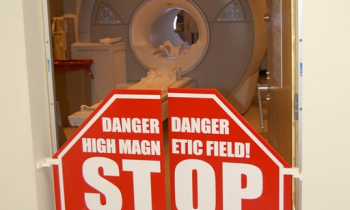Ventilation-associated pneumonia
Bettina Döbereiner reports
Every year in German hospitals about 15,000 patients acquire ventilation-associated pneumonias (VAP). This number, and the associated mortality, is striking enough to make it one of the topics at HAI 2010, the annual conference of the German Society for Anaesthesiology and Intensive Care Medicine (DGAI). Like many physicians, Dr Maria Deja, senior physician at the Charité Clinic for Anaesthesiology, aim to reduce the incidence of such pneumonias and other nosocomial infections.

According to Maria Deja hospitalised patients in Germany stay in intensive care units (ICUs) 6.5 million days annually and, within that number, undergo artificial ventilation for 2.6 million days.
The ventilation rate, as reported in KISS, a hospital infection surveillance system run from the National Reference Centre for Nosocomial Infection Surveillance, is low (40%). Physicians see 15,000 VAP patients annually, and a contributed mortality of up to 25%. Thus, in German ICUs 1,500 patients die annually from VAP (KISS-data).
If multi-resistant bacterial infections are involved, mortality rises up to 75%. This is reason enough for a pronounced debate.
Reducing pneumonia is not only a question of saving lives; it also decreases costs, lowers medication of antibiotics and consequently shrinks the increasing resistance to anti-infectives.
The highest risk of pathogenic bacterial infection in ICUs lies in mechanical ventilation. Therefore, decreasing VAP cases has become of high interest in ICU management. To that end, Maria Deja favours the strict introduction of quality measures and advocates imposing key performance indicators and a focus on hand disinfection, oral hygiene, analogue sedation according to protocol, early weaning off ventilation, subglotic secretion aspiration and elevating the upper body of a patient.
Another vital measure is an accurate regulation of mechanical ventilation. VAP means ventilation associated and therefore every unnecessary ventilation day diminishes the rate of VAPs and reduces mortality. ‘The risk of becoming infected rises daily for those patients,’ she points out.
Precise sedation and weaning protocols are of great importance. The less the patient is sedated, the better he can cough up bronchial secretion.
The Charité Medical University organises peer reviews and participates in the nationwide KISS hospital infection surveillance system. Physicians at Charité have also developed ABx, a computerised, web-based decision support programme to assist the rational use of antibiotics, above all aiming to reduce the generation of resistant or multi resistant pathogens.
An additional problem for physicians is the lack of new generation antibiotics. As cultures studies of new infections reveal, there are often highly resistant gram negative bacteria, such as Pseudomonas aeroginosa. About 40% of VAP patients have a Pseudomonas aeroginosa infection. The pipelines appear to be empty. Really new anti-effectives don’t exist to work against this often multi-resistant pseudomonas, she points out. ‘Patients already die because of the lack of adequate drugs. That‘s why we sometimes have to go back to drugs from the ’60s and ’70s with undesirable side effects, for example acute renal failure.’ She appeals to the pharmaceutical industry to develop new anti-effective against gram-negative pathogens.
* The ABx programme can quickly provide information regarding diagnosis, therapy and local resistance patterns and forms a basis for individual therapy decisions.
The programme is an official project of the German Society of Anaesthesiology and Intensive Care Medicine (DGAI) in cooperation other societies and is currently used in about 200 ICUs in Germany. The aim is to introduce a Europe-wide programme. An English version already exists; French and Spanish versions are in progress.
03.11.2010










